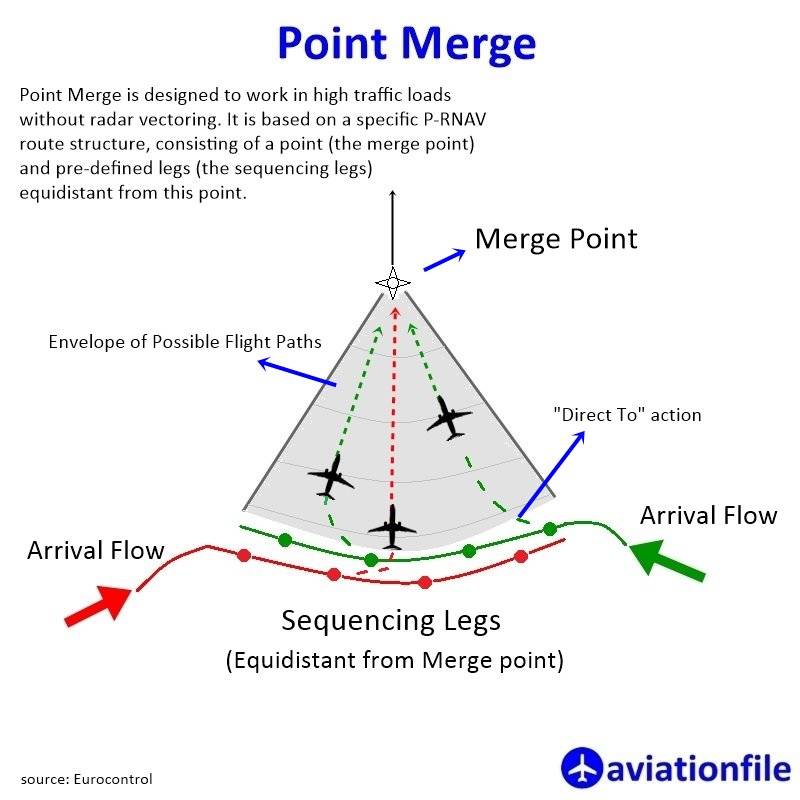Point Merge in Air Traffic Management
Point merge in air traffic management is a systemized method for sequencing arrival flows developed by the EUROCONTROL Experimental Centre in 2006. It is based on a specific P-RNAV route structure, consisting of a point (the merge point) and pre-defined legs (the sequencing legs) equidistant from this point.
Point merge is designed to work in high traffic loads without radar vectoring. Aircraft are assigned to a specific sequencing leg and fly at a pre-defined speed and altitude. This ensures that they arrive at the merge point in a predictable and spaced manner, making it easier for air traffic controllers to manage the flow of traffic.

Point merge offers a number of benefits over traditional vector-based sequencing, including:
- Increased capacity: Point merge can increase the capacity of an airspace by up to 20%.
- Improved efficiency: Point merge reduces the workload on air traffic controllers and allows them to focus on more complex tasks.
- Reduced environmental impact: Point merge enables aircraft to fly more efficient flight paths, which reduces fuel consumption and emissions.
Point merge is now operational at over 35 airports around the world, including major hubs such as Istanbul, Shanghai, and Tokyo.
Here is an example of how point merge works:
- Aircraft are assigned to a specific sequencing leg and fly at a pre-defined speed and altitude.
- As aircraft approach the merge point, they begin to turn towards it.
- Aircraft flying on the outside of the sequencing legs turn in more tightly than those flying on the inside.
- All aircraft arrive at the merge point at the same time and altitude, spaced evenly apart.
- Air traffic controllers then clear aircraft for their approach to the runway.
Point merge is a powerful tool that can help to improve the efficiency and safety of air traffic management.
References:
– https://www.researchgate.net/figure/Point-Merge-system-design-with-two-arrival-flows_fig4_256497459
– https://www.eurocontrol.int/concept/point-merge


